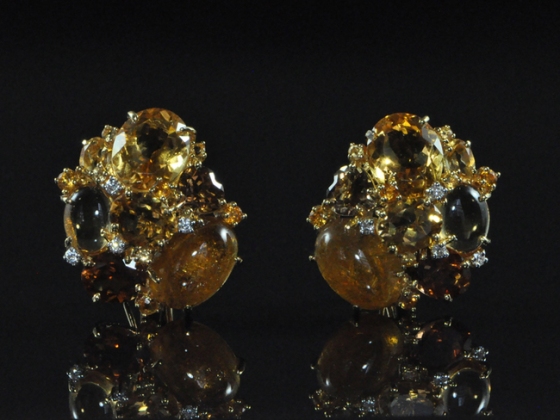If cold December gave you birth,
The month of snow and ice and mirth,
Place on your hand a turquoise blue;
Success will bless whate’er you do.
This was the twelfth birthstone poem in Tiffany & Co’s pamphlet from 1870, “of unknown author”, where we learn that Turquoise is the December birthstone. In 2002 the American Gem Trade Association also added Tanzanite as a December birthstone.
We learnt all about Tanzanites in the blog post You Brilliant Tanzanite back in November 2013, after my visit to South Africa where they have a lot of lovely Tanzanite jewellery. Just to refresh our memories, this blueish/purple stone was first discovered in 1967 in Tanzania, and Tiffany & Co brought it to the world in 1969 – and it received a very warm welcome indeed! These days only small scarps of Tanzanite are found in the mines and the general consensus is that there is a supple of another 15-20 years left, before we completely run out, which only increases the demand for this beautiful gem. Tanzanite is said to calm an overactive mind, to help you relax, slow down, and bring you back into balance.
So I am a HUGE fan of turquoise, December’s original birthstone. There is just something about its beautiful, soft colour and appearance that appeals to me – and the fact that it is my grandmother’s favourite gem might obviously have something to do with it! In the photo above I am wearing a turquoise brooch that was found in the fascinating house in Sweden that I wrote about last year in the blog posts: A Window Into Early 20th Century Sweden – one of my favourite blog posts to date!
The turquoise has covered so many different countries; travelling to Europe via Turkey (where it received its name), having been a favourite among the Ancient Egyptians, the early Victorians, as well as the Navajo Indians. It is believed to protect its user from falls, and was attached to the bridles of the Turkish soldiers’ horses. It is also believed to change colour due to the condition of its wearer – growing pale if the person is sick and regaining a stronger colour every day when transferred to a new, healthy owner (or hopefully changing colour as the owner that was unwell starts feeling better again!) It is also believed to bring luck, success, ambition and creativity to its wearer. So Happy Birthday to all of you sweet December children – now go and enjoy your lovely birthstones!





































